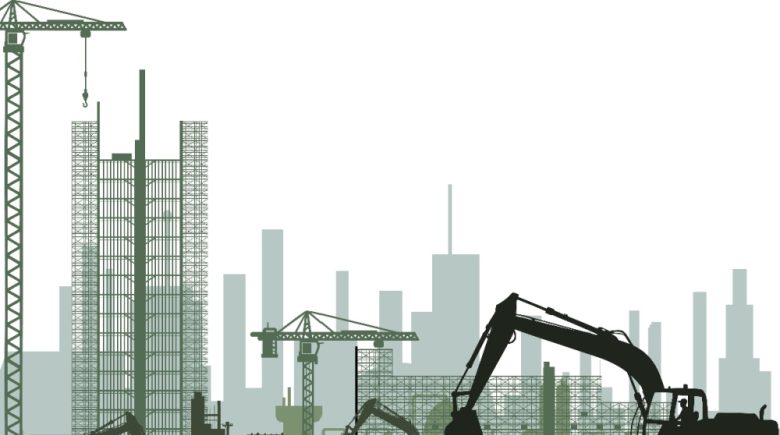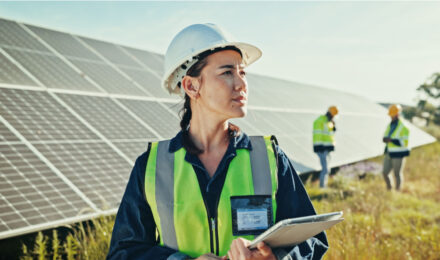Infrastructure is no longer limited to roads and bridges but also encompasses the spirit of innovation, sustainability, and other economic improvements in 2025. The pressure on infrastructure changes rapidly in tandem with urban population growth and the expansion of digital technologies. Cities are implementing innovative systems, governments are investing in climate-resilient infrastructure, and geysers of funds are being unleashed on projects through public-private partnerships. The knowledge of the existing state of the infrastructure enables people, corporations, and decision-makers to envision a more connected, efficient, and globally challenge-ready future.
1. The Evolution of Infrastructure in the 21st Century
Previously, infrastructure has been limited to physical infrastructure, including transportation systems, water, electric grid, and civic structures. It now encompasses digital infrastructure, including broadband internet, renewable energy installations, and smart grid technologies that utilize sensors. With the shift towards clean energy and urbanization in societies, infrastructure must be updated to support contemporary demands. Large federal initiatives, including the Infrastructure Investment and Jobs Act (IIJA), are transforming priorities in the U.S. Enacted at the end of 2021, this historic investment remains on track to spend hundreds of billions on highways, railroads, broadband, EV charging networks, and others in 2025. It is not simply about a repair but about a transformation process of constructing smarter, greener, and more inclusive structures.
2. Smart Infrastructure and Urban Development
The route to smart cities is through technology as an integral part of the urban planning system. Automated systems and data analytics are being applied to control transportation, reduce environmental burden, and enhance urban services in cities across the United States. Roads and bridges are already being constructed with sensors that detect the status of the structure and warn authorities in real time, helping to improve safety and eliminate expensive repairs. Smart traffic minimizes traffic and emissions by optimizing traffic signals based on the current traffic flow. Urban planners are also using virtual prototypes of cities to test and simulate new developments before investing in their physical reality. Concurrently, the substantial investment in broadband equity is helping to ensure high-speed internet access for underserved and rural communities, thereby promoting digital inclusion for all communities. The interconnected systems will transform the infrastructure into a vibrant, responsive, and encouragingly comfortable lifestyle and promote sustainability.
3. Infrastructure and Climate Resilience
The climate change resilience of modern infrastructure must be taken into account when designing it in light of its rapidly increasing rate. The design and planning of structures are being enhanced gradually with the introduction of new systems and materials into designs and planning that will withstand adverse weather conditions, projected rising sea levels, and other environmental challenges the environment may present. Cities that are often subject to flooding are using permeable pavement as a way to limit surface runoff and prevent flooding. The coastal regions are erecting high rail and storm surge barriers to protect against flooding in the transport and residential sectors. Planting more trees and incorporating green roofs into urban centers is also being done to mitigate the urban heat island effect while cooling neighborhoods and saving energy. Utility level consists of power grid hardening and re-designing against wildfires, hurricanes, and extreme temperatures.
4. The New Economic Engine in Digital Infrastructure
Fast internet is no longer a luxury but a crucial part of the infrastructure. With the increasing prevalence of remote work, online learning, telemedicine, and other aspects of life, digital infrastructure is vital for economic engagement. In 2025, the U.S. is expected to aggressively expand its fiber-optic networks, invest in 5G wireless networks, and narrow the digital divide in rural regions. It is not just a convenience but also about creating jobs, accessing digital marketplaces, and supporting small businesses. The modern definition of infrastructure also encompasses cloud infrastructure, data centers, and cybersecurity systems. Governments and businesses are viewing digital networks as vital infrastructure, much like roads and bridges.
5. Electrification and Efficiency in Transportation Infrastructure
Climate objectives and consumer desires to have greener mobility and transportation are prompting a swift transition in the industry. Electric vehicle (EV) infrastructure is a segment that is experiencing rapid growth. In 2025, the number of publicly available charging stations around the U.S. is in the tens of thousands, funded by both federal and private investment. There is also a revival in the development of high-speed rail and mass transit systems. Developed cities such as Dallas, Miami, and San Francisco are investing in extended rail services so that they can wean their populations off cars. Meanwhile, automated bus rapid transit (BRT) systems are helping cities enhance mobility and reduce emissions. There is also the modernization of airports and seaports, featuring innovative technology and electrified ground vehicle fleets, as well as improved security infrastructure, to accommodate a rapidly globalizing economy.
6. Water and Energy Infrastructure
Water and energy infrastructure is increasingly becoming a national priority, particularly as systems age and demand escalates. Outdated water pipeline systems are also being equipped with smart sensors and automated leak detection systems to enable water utilities to reduce water wastage and distribute safe water. Additionally, cities are investing in new purification technologies that will consume less energy and distribute cleaner water. The energy industry is not an exception; green sources, such as solar and wind, are making a significant impact on the national grid. There is also the incorporation of smart meters by electricity providers, which are used to provide real-time data on consumption, allowing customers to save on their usage. Additionally, there is the installation of battery storage systems to save more available energy that can be used during peak-demand times and outages. Microgrids are also being used in remote areas or those frequently affected by disasters, allowing for local power generation and reducing dependency on insecure centralized utilities. These advancements are reducing the cost of improvements to make vital utilities more efficient, reliable, and environmentally friendly.
7. Public-Private Partnerships and Infrastructure Financing
Infrastructure is very costly, and conventional government financing has limited capability. Another model used to accelerate the delivery of large-scale infrastructure is the practice of public-private partnerships (PPPs), which are expected to gain popularity in 2025. The private corporation offers emergency cash to get future earnings or performance-based incentives. Successful PPPs can be seen to include toll roads, green energy, and airport expansions. Such models minimize the cost to taxpayers and bring market-based efficiencies. Transparency and fair access, on the other hand, are significant issues that governments must balance carefully.
8. Equity, Innovation, and Execution
Even as improvement is being felt, there are still difficulties. Investments in infrastructure should be distributed equitably to avoid exacerbating social disparities. Historically underrepresented areas, Native territories, and rural communities often fail to have their needs met in time or do not attract sufficient investment. Policy is also being left behind by innovation. The regulatory frameworks should change to support the use of AI-based construction tools, self-driving vehicles, and energy storage systems. Another issue is workforce development, as skilled labor is increasingly needed in high-tech construction and the technology-based maintenance of infrastructure. Lastly, more planning, quicker permits, and shared responsibilities between the public and private sectors are necessary for effective project execution.
Infrastructure is no longer a background system with a peripheral role. It is a strategic asset that determines how individuals live, work, and prosper. In any field related to smart cities, resilient water systems, or even connected highways, the blocks of the future are being built today. The move towards sustainable, inclusive, and intelligent infrastructure is not only going to determine the economic direction of nations but also the lives of future generations. As technology continues to develop at a rapid pace, climate change has become a reality, and the modernization of infrastructure is no longer a choice but a necessity. We can achieve growth and secure our world by rebuilding purposefully.
Infrastructure is no longer limited to roads and bridges but also encompasses the spirit of innovation, sustainability, and other economic improvements in 2025. The pressure on infrastructure changes rapidly in tandem with urban population growth and the expansion of digital technologies. Cities are implementing innovative systems, governments are investing in climate-resilient infrastructure, and geysers of funds are being unleashed on projects through public-private partnerships. The knowledge of the existing state of the infrastructure enables people, corporations, and decision-makers to envision a more connected, efficient, and globally challenge-ready future.
1. The Evolution of Infrastructure in the 21st Century
Previously, infrastructure has been limited to physical infrastructure, including transportation systems, water, electric grid, and civic structures. It now encompasses digital infrastructure, including broadband internet, renewable energy installations, and smart grid technologies that utilize sensors. With the shift towards clean energy and urbanization in societies, infrastructure must be updated to support contemporary demands. Large federal initiatives, including the Infrastructure Investment and Jobs Act (IIJA), are transforming priorities in the U.S. Enacted at the end of 2021, this historic investment remains on track to spend hundreds of billions on highways, railroads, broadband, EV charging networks, and others in 2025. It is not simply about a repair but about a transformation process of constructing smarter, greener, and more inclusive structures.
2. Smart Infrastructure and Urban Development
The route to smart cities is through technology as an integral part of the urban planning system. Automated systems and data analytics are being applied to control transportation, reduce environmental burden, and enhance urban services in cities across the United States. Roads and bridges are already being constructed with sensors that detect the status of the structure and warn authorities in real time, helping to improve safety and eliminate expensive repairs. Smart traffic minimizes traffic and emissions by optimizing traffic signals based on the current traffic flow. Urban planners are also using virtual prototypes of cities to test and simulate new developments before investing in their physical reality. Concurrently, the substantial investment in broadband equity is helping to ensure high-speed internet access for underserved and rural communities, thereby promoting digital inclusion for all communities. The interconnected systems will transform the infrastructure into a vibrant, responsive, and encouragingly comfortable lifestyle and promote sustainability.
3. Infrastructure and Climate Resilience
The climate change resilience of modern infrastructure must be taken into account when designing it in light of its rapidly increasing rate. The design and planning of structures are being enhanced gradually with the introduction of new systems and materials into designs and planning that will withstand adverse weather conditions, projected rising sea levels, and other environmental challenges the environment may present. Cities that are often subject to flooding are using permeable pavement as a way to limit surface runoff and prevent flooding. The coastal regions are erecting high rail and storm surge barriers to protect against flooding in the transport and residential sectors. Planting more trees and incorporating green roofs into urban centers is also being done to mitigate the urban heat island effect while cooling neighborhoods and saving energy. Utility level consists of power grid hardening and re-designing against wildfires, hurricanes, and extreme temperatures.
4. The New Economic Engine in Digital Infrastructure
Fast internet is no longer a luxury but a crucial part of the infrastructure. With the increasing prevalence of remote work, online learning, telemedicine, and other aspects of life, digital infrastructure is vital for economic engagement. In 2025, the U.S. is expected to aggressively expand its fiber-optic networks, invest in 5G wireless networks, and narrow the digital divide in rural regions. It is not just a convenience but also about creating jobs, accessing digital marketplaces, and supporting small businesses. The modern definition of infrastructure also encompasses cloud infrastructure, data centers, and cybersecurity systems. Governments and businesses are viewing digital networks as vital infrastructure, much like roads and bridges.
5. Electrification and Efficiency in Transportation Infrastructure
Climate objectives and consumer desires to have greener mobility and transportation are prompting a swift transition in the industry. Electric vehicle (EV) infrastructure is a segment that is experiencing rapid growth. In 2025, the number of publicly available charging stations around the U.S. is in the tens of thousands, funded by both federal and private investment. There is also a revival in the development of high-speed rail and mass transit systems. Developed cities such as Dallas, Miami, and San Francisco are investing in extended rail services so that they can wean their populations off cars. Meanwhile, automated bus rapid transit (BRT) systems are helping cities enhance mobility and reduce emissions. There is also the modernization of airports and seaports, featuring innovative technology and electrified ground vehicle fleets, as well as improved security infrastructure, to accommodate a rapidly globalizing economy.
6. Water and Energy Infrastructure
Water and energy infrastructure is increasingly becoming a national priority, particularly as systems age and demand escalates. Outdated water pipeline systems are also being equipped with smart sensors and automated leak detection systems to enable water utilities to reduce water wastage and distribute safe water. Additionally, cities are investing in new purification technologies that will consume less energy and distribute cleaner water. The energy industry is not an exception; green sources, such as solar and wind, are making a significant impact on the national grid. There is also the incorporation of smart meters by electricity providers, which are used to provide real-time data on consumption, allowing customers to save on their usage. Additionally, there is the installation of battery storage systems to save more available energy that can be used during peak-demand times and outages. Microgrids are also being used in remote areas or those frequently affected by disasters, allowing for local power generation and reducing dependency on insecure centralized utilities. These advancements are reducing the cost of improvements to make vital utilities more efficient, reliable, and environmentally friendly.
7. Public-Private Partnerships and Infrastructure Financing
Infrastructure is very costly, and conventional government financing has limited capability. Another model used to accelerate the delivery of large-scale infrastructure is the practice of public-private partnerships (PPPs), which are expected to gain popularity in 2025. The private corporation offers emergency cash to get future earnings or performance-based incentives. Successful PPPs can be seen to include toll roads, green energy, and airport expansions. Such models minimize the cost to taxpayers and bring market-based efficiencies. Transparency and fair access, on the other hand, are significant issues that governments must balance carefully.
8. Equity, Innovation, and Execution
Even as improvement is being felt, there are still difficulties. Investments in infrastructure should be distributed equitably to avoid exacerbating social disparities. Historically underrepresented areas, Native territories, and rural communities often fail to have their needs met in time or do not attract sufficient investment. Policy is also being left behind by innovation. The regulatory frameworks should change to support the use of AI-based construction tools, self-driving vehicles, and energy storage systems. Another issue is workforce development, as skilled labor is increasingly needed in high-tech construction and the technology-based maintenance of infrastructure. Lastly, more planning, quicker permits, and shared responsibilities between the public and private sectors are necessary for effective project execution.
Infrastructure is no longer a background system with a peripheral role. It is a strategic asset that determines how individuals live, work, and prosper. In any field related to smart cities, resilient water systems, or even connected highways, the blocks of the future are being built today. The move towards sustainable, inclusive, and intelligent infrastructure is not only going to determine the economic direction of nations but also the lives of future generations. As technology continues to develop at a rapid pace, climate change has become a reality, and the modernization of infrastructure is no longer a choice but a necessity. We can achieve growth and secure our world by rebuilding purposefully.



